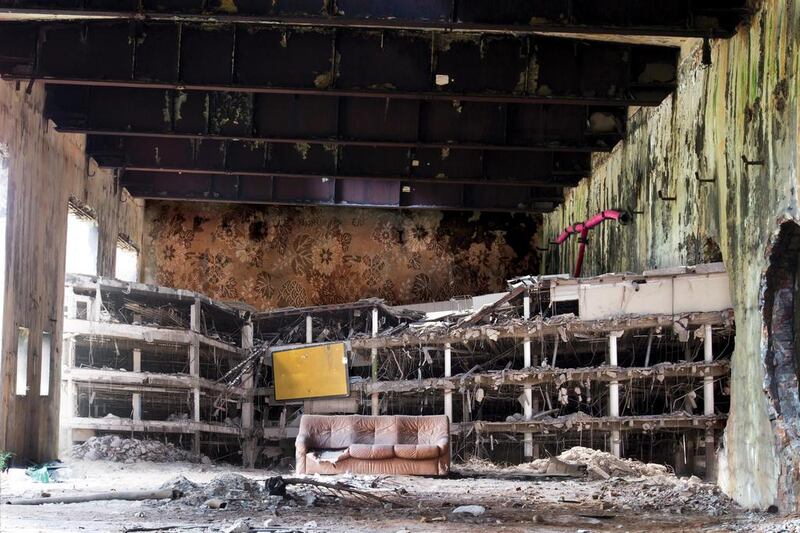When I last visited the Syrian artist Tammam Azzam in his Dubai studio, more than a year ago, he was in a dark mood. The night before, he had marched with 10 finished paintings to a dumpster and abandoned months of work among other people’s household trash. The pieces just couldn’t seem to come out the way he had envisioned. They were the result of a practice and a life interrupted, when Azzam was forced to abandon his Damascus studio in 2012.
In Dubai, he initially didn’t have the studio space he needed to paint, and the series he had started in pre-conflict Syria was no longer relevant, so he turned to digital art with the equipment he could access at Ayyam Gallery.
In 2013, Freedom Graffiti (in which Azzam superimposed The Kiss, Gustav Klimt's classic art deco painting, onto a photograph of a bombed-out Damascus building) went viral, and was splashed across major news syndicates around the world as an emblem of the resilience of love despite intensifying violence. However, Azzam – who sees himself as a painter rather than a digital artist – was not completely fulfilled, and hoped to be able to find his way again to the easel.
Fast forward to present day and the opening of The Road, the artist's first exhibition of paintings since leaving Syria, which is showing at Ayyam on Alserkal Avenue until March 3. Large-scale canvasses from the Storeys series, composed in a monochrome palette, dominate the gallery's black-walled space.
The brush strokes are deliberate and muscular and the images are contemplative riffs off photographs that Azzam sourced via Reuters and other networks known for war correspondence. A diptych on the back wall presents the skeleton of a neighbourhood; and although there are no figures visible, the stories of the former inhabitants seem to linger, trapped in the tattered curtains or gawking, open-mouthed windows.
In another piece installed nearby, an unpaved street leads through a gauntlet of destruction towards a smudged horizon, symbolising the unpredictable path followed by the estimated 6.5 million displaced Syrians, who had no choice but to leave their homes on a pilgrimage towards an unnamed destination.
While Azzam's previous shows, Syria (2012) and I, The Syrian (2013), stubbornly looked towards a resilient future for his country, The Road, which is firmly grounded in the present, communicates stark hopelessness. This message is brought home by Witness, a portrait of a First World War-era soldier in battle gear, whose presence signifies the futile way that war repeats itself in meaningless cycles over time.
The painted road becomes an immersive experience as visitors follow a path littered with boulders and debris down the gallery hallway, ultimately facing off with an installation of rubble that pours down the space’s industrial stairwell.
A man’s dusty shoes lie nearby and it’s impossible not to imagine the scenarios that would lead a displaced person to abandon his one pair of shoes, and to momentarily – perhaps amid the light-hearted air-kissing and drink-passing that takes place at a gallery opening – to imagine yourself as a Syrian fleeing the life you have known along this same road.
The paintings and accompanying digitally enhanced photographs are certainly not pieces to hang above the couch. It is commendable that Ayyam went such a non-commercial route in a decidedly high-rent commercial space on one of the most popular art nights of Dubai’s season, much less at the beginning of a new year that has been forecast to be as forebodingly slow for sales. I don’t think that Azzam, who so clearly has found his way back to painting, will be throwing away many canvasses in the near future.
artslife@thenational.ae





